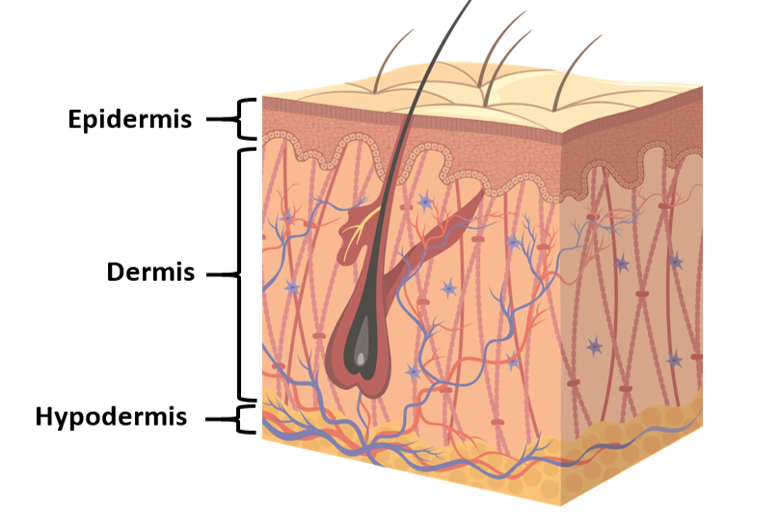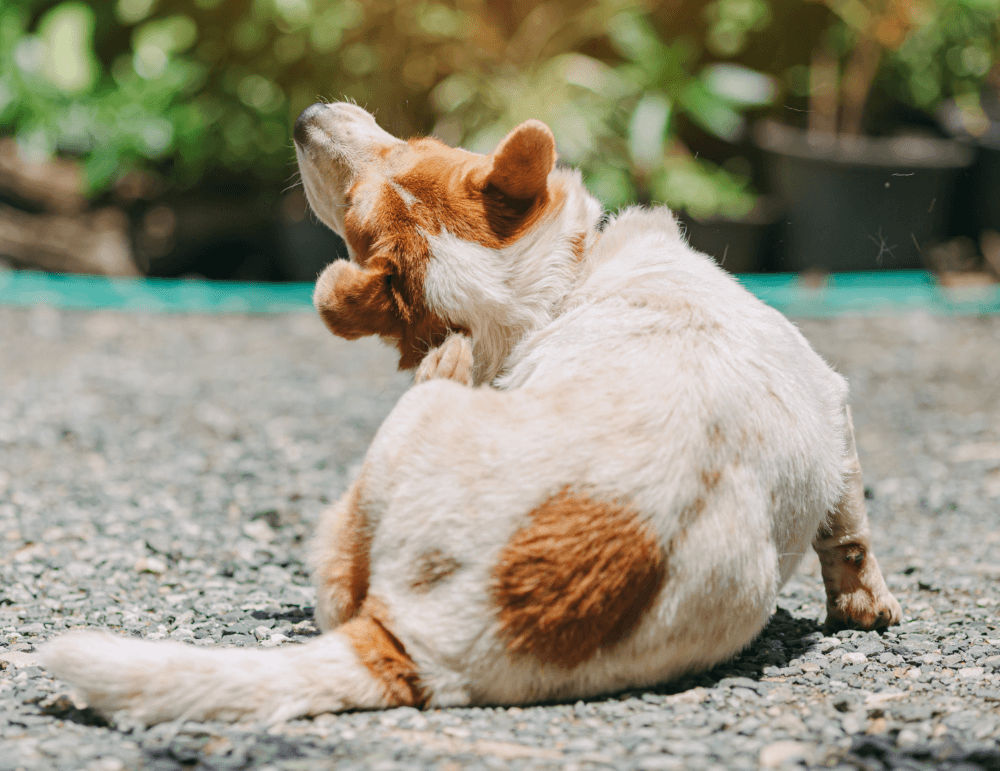A guide to skin health for dogs and cats
We may forget that the skin is an organ in its own right, equating to a huge 10-15% of our dog or cat’s bodyweight. It is therefore not surprising that our pet’s skin health can have a huge impact on their general health and wellbeing. The skin and its accessory structures (including hair, nails, hooves, feathers, sweat […]
We may forget that the skin is an organ in its own right, equating to a huge 10-15% of our dog or cat’s bodyweight. It is therefore not surprising that our pet’s skin health can have a huge impact on their general health and wellbeing. The skin and its accessory structures (including hair, nails, hooves, feathers, sweat glands, sebaceous glands and scales) make up the integumentary system and is the main boundary between the body and the outside world. Its functions are vast including protection from the external environment, sensation and regulation, also called homeostasis.
What makes up the skin?
The skin is structured in three main layers: the epidermis, dermis and hypodermis.
The hypodermis is the deepest layer consisting mainly of fat tissue that can act as a store of energy or an insulating layer to protect underlying tissues.
The next layer is called the dermis which gives the skin its strength, elasticity, turgor and resilience. It is also the layer that contains the blood vessels, nerves, glands and hair follicles in the skin and so is important for regulation and sensation. The dermis also contains sebaceous glands which produce sebum, an oil which lubricates the skin and coat and regulates the skin surface environment.
The outermost and final section of the skin is called the epidermis. The epidermis consists of four main layers made up of specialist cells called keratinocytes. These cells start their journey in the deepest part of the epidermis, becoming tougher and stronger as they migrate through the layers towards the outside world. At this point, the keratinocytes have become so hard and altered from their original state that we change their name to corneocytes;this process is called cornification, which means ‘turning to horn’ in Latin. The keratinocytes also produce a fatty waterproof substance called the lipid matrix, which fills in the spaces between the corneocytes. You can visualise this process by imagining the epidermis to be like a brick wall, where the corneocytes are the tough bricks and the lipid matrix the waterproof mortar or cement. Together they create a strong, waterproof barrier and act as the first line of defence against harmful pathogens living in our external environment.

What roles does the skin have?
The skin has several important functions that are vital not only for survival, but also in regulation of bodily processes by feedback to the brain.
Immunity
The skin, similarly to the gut, has a diverse ecosystem living on its surface consisting of a fine balance of certain microorganisms which act to prevent the multiplication of harmful bacterial, yeast and fungal populations. This is known as the microbiome and it can easily be disrupted if the underlying skin is not healthy, allowing harmful bacteria to proliferate and infections to develop. The epidermis also contains special types of white blood cells, which are activated if harmful substances or pathogens do manage to breach the skin barrier.
Protection
The fur or coat provides the skin with the first level of protection against trauma and UV light. The skin beneath then acts as the second barrier, protecting underlying organs and structures from external threats, and sensing stimuli which could be potentially damaging.
Hydration
One of the most important functions of the skin is to keep our pets hydrated. The skin’s outer layer (the epidermis) is made up of tough skin cells surrounded by fatty material (our bricks and mortar) which act to lock in water. This waterproof barrier stops a process called trans-epidermal water loss (TEWL), which means the loss of water across the skin to the environment. Without this important function, our pets would dehydrate very quickly, and the skin would become dry, flaky and itchy.
Sensory
The epidermis contains nerves allowing the sensation of light touch; however, all other nerves which let our pets sense heat, cold, pressure and pain are located in the dermis. Sensory information is fed back to the brain and results in a physiological or behavioural reaction, such as moving to a cooler spot in the house if our pets sense they are too warm.
Temperature Regulation
The skin has a huge role in regulation of body temperature. In cold temperatures, small muscles in the hair follicles are activated leading to the fur standing up in order to trap a layer of insulating air against the skin and increase body temperature. Another regulatory mechanism is the ability of blood vessels running close to the skin surface to widen (dilate) or narrow (constrict) to regulate heat loss or conservation. It is worth nothing that our dogs and cats are unable to sweat (except through their paws), so rely on panting as their main method of cooling. This is also a reason why dogs are so prone to heatstroke in hot weather.
What happens in disease?
With all these functions in mind, we can see why it is so important to look after our pets’ skin for them to remain happy and healthy. When the skin’s protective barrier is damaged or abnormal, these normal functions are disrupted and disease may result which can present in several ways:
- Dry, flaky skin: if the keratinocyte ‘bricks’ and lipid ‘mortar’ are not built correctly, the skin barrier is no longer tightly held together, and its waterproof function is lost. This allows water to escape the body resulting in dry, flaky and itchy skin.
- Itching (pruritus): when external substances cross the damaged skin barrier, they set off inflammatory pathways in the skin, which can lead our pets to feel itchy. Unfortunately, when the skin is scratched this creates further damage and hence the vicious itch-scratch cycle develops.
- Hair loss (alopecia): one of the first signs we may see in our pets is hair loss, which is often the result of your pet scratching at a particular area excessively. However, sometimes hair loss can be associated with hormone or other systemic conditions so you should always consult with your vet if you notice these changes.
- Redness and irritation: skin redness may occur as a direct result of scratching, or a rash may develop secondarily to an allergic reaction or infection, amongst many other causes.
- Smelly coat or discharge on the skin: a dysfunctional skin barrier may allow certain microorganisms (bacteria, yeasts) that exist as part of the healthy skin microbiome to overgrow and develop into skin infections. This can result in a pungent smell and/or yellow/brown discharge on the skin.

If you notice your pet has any of these symptoms, it is important to make an appointment with your vet as soon as possible. Your vet may wish to run tests to rule out causes such as parasites, infections, hormonal conditions and food allergies, all of which would have specific treatments. However, it is important to understand that some skin conditions are trickier to diagnose and treat. These cases often require long-term management with medication, shampoos/mousses and supplements due to the ongoing requirement to keep the skin barrier healthy. This in turn will help to prevent such frequent ‘flare ups’ and may allow some medications to be reduced.
Discover more about our product DermalEase and how it can support your pet’s skin!


